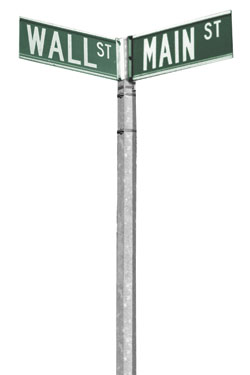
In the midst of the financial crisis, the country is at least able to reach bi-partisan agreement on where to fix the blame: Wall Street. It is a convenient explanation for voters wanting to be reassured that someone else is at fault, but it is starting to look unconvincing, or at least badly incomplete. Because at the bottom of the muck-filled well of the banking collapse lies something much simpler than the complicated bonds and derivatives that are Wall Street’s stock-in-trade: bad loans. Really, really bad loans.
New York is supposed to be the world capital of financial sophistication, but when it comes to the Rube Goldberg contrivances that kept the real-estate market going in California, Florida, and other parts of the country, we are duffers. To the average, or even not-so-average, New Yorker, the mortgage-speak that is familiar to folks who bought houses in places like San Diego—“negative amortization,” “alternative/reduced documentation”—is gibberish. If you want to find the birthplace of the depraved mortgage culture, you can go to Oakland, California, the headquarters of Golden West (bought by Wachovia and the source of its troubles), the people who invented the negative-amortization mortgage—a mortgage on which you pay less than the interest for a few years, until the payments rise and you either refinance or move out. Or maybe to Seattle, the headquarters of Washington Mutual, which might have set the standard for bad lending. One financial analyst and blogger named Michael Shedlock kept a monthly tally of the loans going bad in one bundle of Washington Mutual mortgages from 2007 (yes, that’s last year). In the post-Depression era, no more than 2 or 3 percent of all mortgages have failed in a year. After less than two years, half of this batch of WaMu loans had soured or were at least two months behind.
It was not Wall Street that gave homebuyers mellifluous assurances. In fact, the culture of New York lending and the co-op rules that imposed an extra (and, it’s now obvious, useful) level of restraint on real estate in New York meant that your average Wall Street deal-maker couldn’t get a loan on the terms that were routine in all of Southern California.
So where did Wall Street come in? The investment houses did what their job is in any bubble: They sold it to their clients. The hundreds of billions of dollars of shoddy loans that mortgage underwriters made were packaged off and retailed to investors around the world. Not all the loans: The banks kept plenty on their own books—if they could have gotten rid of them all, Wachovia and Washington Mutual and Countrywide would still be in business. But many, many billions of dollars of them were bundled, cut up into slices to make “mortgage-backed securities” and “CDOs” and an alphabet soup of other bonds.
The mystique of Wall Street is all about the knowledge business. But the reality has been that most of it is about the sales business, putting its imprimatur on investments and in the process, especially in the later stage of a bubble, rubbing away the marks of their less-than-pristine origins. And by doing so, Wall Street shields the rest of the market from responsibility. We have seen the pattern before. The junk-bond frenzy will forever be linked with the names Ivan Boesky and Michael Milken. We remember that the savings-and-loan crisis took down Salomon Brothers; who can recall the banks involved? And when it came to the indigestion that followed the Internet smorgasbord, it was the investment banks that walked into court for a round robin of fines, not the Silicon Valley executives or the venture capitalists who’d cashed in their shares as their dot-coms cratered.
This may be the death of Wall Street as we know it. But rest assured that when the next speculative frenzy comes around, someone will be there to retail it, whether it’s called Wall Street or something else.

• The Anxiety Index
• A Crisis-Speak Glossary
• New York’s Rough Future
Have good intel? Send tips to intel@nymag.com.